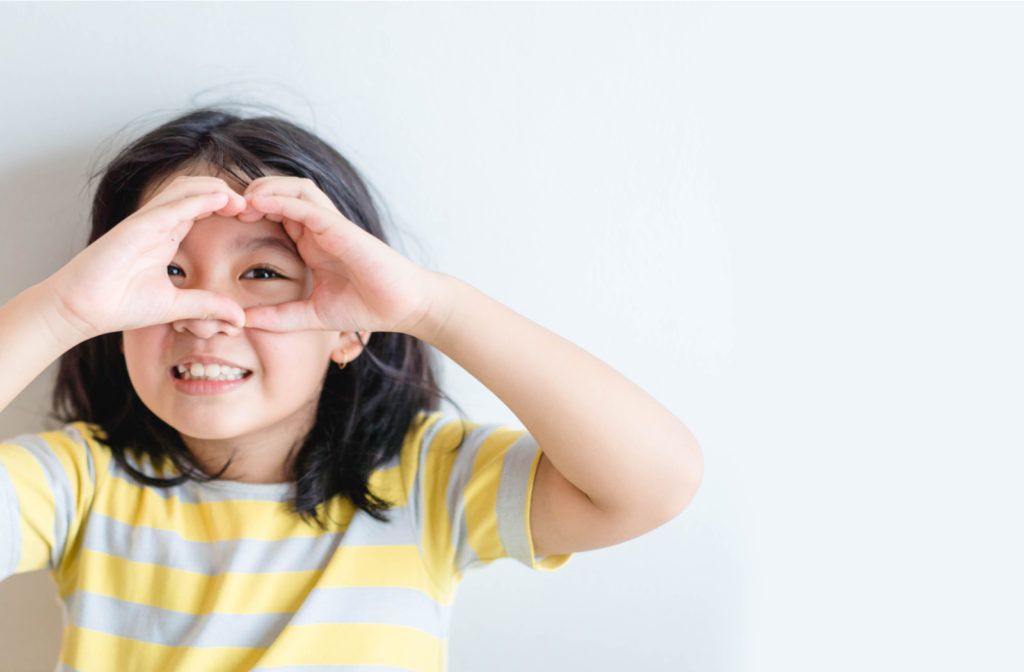Your child’s vision is precious, helping them play, learn, and experience the world around them. With how important their vision is, are refractive errors like myopia dangerous?
Continue reading to learn more about myopia, including how it can affect your child’s vision and if it’s dangerous.
What Is Myopia?
Myopia is one of the most common refractive errors in the world. This condition affects a person’s eyesight, making close-up vision more difficult. They can see clearly from a distance, but nearby objects appear blurry.
Approximately 40% of the US population has myopia, and nearly 50% of the world population will have some degree of myopia by 2050. Watching for signs of myopia in your child is important, considering how prevalent this condition is today.
Myopia Symptoms
There are many common symptoms related to myopia, including:
- Blurry vision when looking at distant objects
- The need to squint to see clearly
- Headaches
Many people develop myopia in childhood, so watch for symptoms in your child. They may not realize they have a vision problem if they develop this condition at a young age.
Symptoms of myopia in children include:
- Frequent squinting
- Sitting close to the television & other screens
- Frequent headaches
- Difficulty focusing in school
- Holding books close to their face when reading
Booking regular eye exams for your child can help your optometrist catch early signs of myopia development. With how many people have myopia, how does this refractive error develop?
What Causes Myopia?
People with myopia have uniquely shaped eyes where the eyeball is too long, or the cornea has a steep curvature. The shape of the eyes causes light to focus improperly on the retina, the part of the eye essential for your sight. Light focuses in front of the retina instead of on it, causing blurry vision.
Besides the shape of the eyes, other factors can contribute to myopia development, including:
- Family history
- Concentrating on near tasks
- Reduced time spent outdoors
- Increased time in front of screens
It’s common for myopia to develop during childhood, causing blurry vision and difficulty focusing. If your child develops myopia, is this condition dangerous?
Is Myopia Dangerous in Children?
Myopia can be dangerous when left untreated in children, increasing their risk of several health problems. There are varying degrees of myopia, with some children having mild cases while others have more severe cases.
As children grow, so do their eyes. This progression can cause a mild case of myopia to become high myopia.
What Is Myopia Progression?
Myopia progression occurs in children as they age into adulthood. This condition stabilizes between the ages of 20–30. Your child’s myopia may worsen for years as they grow older, potentially progressing into high myopia.
Myopia is severe, or “high,” when someone needs vision correction of -6.00 diopters or more. Besides requiring a heavier prescription, high myopia increases your child’s risk of several eye conditions, including:
- Retinal tears
- Retinal detachments
- Glaucoma
- Cataracts

The Risks of High Myopia
Myopia can be dangerous if it progresses into high myopia. There is a lifelong risk of retinal tears or holes, abnormal blood vessel growth beneath the retina, and changes in the vitreous within the center of the eye.
Retinal Tears & Detachments
The retina is the inner lining within the eye that helps people see. Tears can form in the retina when the vitreous, the gel-like fluid in the eye, pulls away from the retina.
Someone may notice black spots or floaters within the eye when they experience a retinal tear. A tear in the retina creates the risk of retinal detachment and severe vision loss.
Retinal detachment is an emergency where the retina detaches from its normal position at the back of the eye. The retina lacks the oxygen and nourishment it requires from the blood vessels in the eye when it detaches. The longer someone experiences retinal detachment, the greater the risk of permanent vision loss.
Someone must visit their optometrist for emergency eye care if they notice a sudden appearance of floaters, flashes of light, or reduced vision.
Glaucoma
Glaucoma is a group of eye diseases that damage the optic nerve. This damage typically occurs due to a build-up of pressure on the optic nerve, causing the development of blind spots in someone’s vision. With time, glaucoma can cause unrecoverable vision loss.
Glaucoma can develop with little to no visible symptoms. Someone may see fine but still have this condition.
Cataracts
A cataract occurs when the clear lens within the eye begins to harden and become cloudy. Having cataracts is similar to looking through a dusty windshield, making it difficult to read, drive, or see clearly.
Cataracts typically occur due to natural changes within the eye after age 40. Someone may not notice any problems at first, but this condition can eventually cause severe vision loss. Many people require cataract surgery to see clearly again.
How Can You Protect Your Child’s Vision?
High myopia increases the risk of several eye conditions, including glaucoma, cataracts, and retinal tears and detachments. However, if your child has myopia, it doesn’t mean that their condition will progress into a more severe form. Myopia control treatments can help slow myopic progression, protecting your child’s vision.
These treatments include:
You can protect your child’s vision and eye health with help from your optometrist. They can diagnose myopia and create a customized treatment plan to help slow myopic progression.
Contact your optometrist if your child experiences symptoms of myopia.


